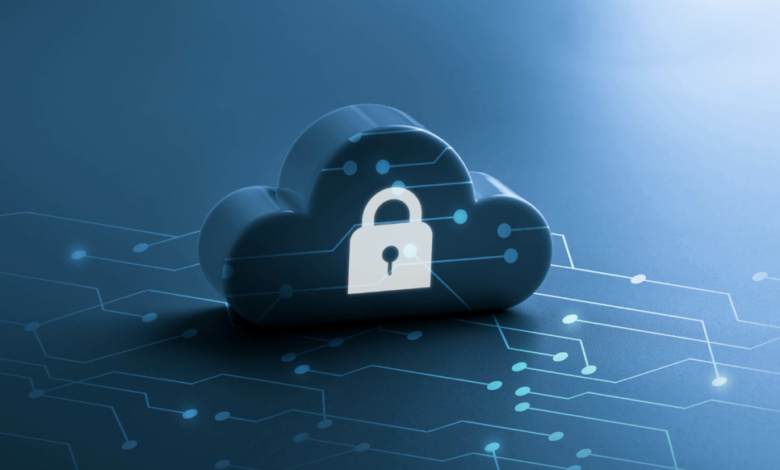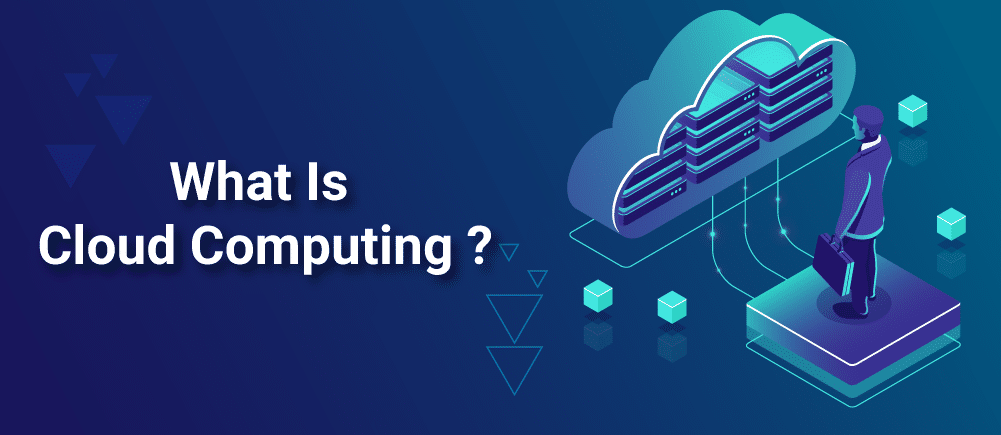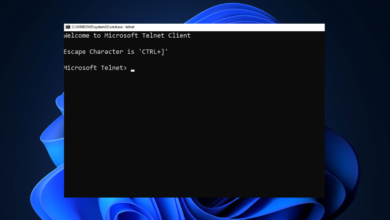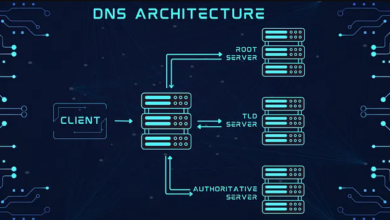What is cloud security? | How you should approached?

What would happen if your most sensitive data fell into the wrong hands? In the digital age, this is a pressing concern for every organization, and cloud security is the first line of defense. As businesses increasingly store valuable data in the cloud, the stakes have never been higher. But what exactly does cloud security entail, and how can it safeguard your assets from sophisticated cyber threats? Understanding and effectively approaching cloud security is critical—not just for protection but for building trust, ensuring privacy, and enabling seamless growth. This guide explores everything you need to know to stay one step ahead.
Table of Contents
What is Cloud Security?

Cloud security is a protective framework designed to safeguard data, applications, and infrastructure within cloud environments. As more organizations transition their operations online, the importance of cloud security intensifies. It comprises a blend of policies, controls, and technologies aimed at defending against unauthorized access, data breaches, and cyber threats that target cloud-based systems.
Unlike traditional IT security, cloud security operates in a shared, scalable environment where data is stored remotely and accessed from virtually anywhere. This structure makes comprehensive protections essential. Key components include encryption to protect data, identity and access management (IAM) to control permissions, and network monitoring to detect and mitigate unusual activities. The goal of cloud security isn’t just data protection; it’s also about maintaining compliance with privacy standards and building trust with users. In today’s interconnected landscape, a strong cloud security strategy is vital to safeguard an organization’s most valuable assets.
What is Cloud Computing?

Cloud computing is the on-demand delivery of computing resources over the internet, from storage and processing power to applications and databases. Rather than relying on local servers or personal devices, organizations can access vast resources hosted remotely, making cloud computing a highly scalable and flexible solution. This model enables companies to reduce their physical IT footprint and respond more dynamically to fluctuating workloads, paying only for the resources they actually use.
A critical component of cloud computing is cloud security, which protects data, applications, and infrastructure within these shared environments. With sensitive information stored offsite, cloud security employs encryption, access controls, and threat monitoring to safeguard digital assets against unauthorized access and cyber threats. As businesses move towards digital transformation, cloud security has become essential, ensuring that the benefits of cloud computing—like cost savings and enhanced agility—are realized without compromising data protection or regulatory compliance.
Cloud computing services are typically provided in three major forms:
- Infrastructure as a Service (IaaS): Provides virtualized computing resources over the internet.
- Platform as a Service (PaaS): Offers hardware and software tools over the internet, usually for application development.
- Software as a Service (SaaS): Delivers software applications over the internet, eliminating the need for local installation.
With cloud computing’s distributed model, organizations can operate with enhanced agility and efficiency, enabling them to innovate faster than with traditional infrastructures.
In an age where data breaches are rampant, robust cloud security measures are no longer optional; they are imperative for safeguarding sensitive information.
Why is Cloud Security Important?
- Protection Against Cyber Threats: Cloud security safeguards sensitive data from various cyber threats, including data breaches and ransomware attacks.
- Controlled Access: It ensures that only authorized users can access critical resources, minimizing the risk of unauthorized access.
- Operational Integrity: By protecting data and applications, effective cloud security maintains the operational integrity of organizations.
- Trust Building: Strong cloud security fosters trust with clients and stakeholders, demonstrating a commitment to data protection.
- Regulatory Compliance: Compliance with regulations such as GDPR and HIPAA relies on robust cloud security measures, preventing potential legal issues and penalties.
- Minimized Downtime: A solid cloud security posture helps mitigate potential downtime, protecting against financial losses.
- Reputation Management: Maintaining strong cloud security is crucial for preventing reputational damage that can arise from security incidents.
- Data Confidentiality: Prioritizing cloud security ensures the confidentiality, integrity, and availability of data in a cloud-based environment, enabling business success.
What are Some Cloud Security Challenges?
1- Data Breaches
Data breaches pose a significant threat to organizations relying on cloud security. When sensitive information is stored in the cloud, it becomes a prime target for cybercriminals. A successful breach can result in the exposure of personal data, financial records, and intellectual property, leading to severe reputational and financial repercussions. Inadequate security measures, such as weak passwords or insufficient encryption, can exacerbate these risks. Effective cloud security strategies must include robust access controls, continuous monitoring, and regular security audits to detect vulnerabilities before they can be exploited. By prioritizing data protection, organizations can mitigate the risk of breaches and safeguard their assets in an increasingly perilous digital landscape.
2- Inadequate Access Controls
Inadequate access controls represent a critical vulnerability in cloud security frameworks. When organizations fail to implement stringent authentication protocols, they expose themselves to unauthorized access, increasing the risk of data breaches. Weak passwords, lack of multi-factor authentication, and poorly defined user roles can allow malicious actors to exploit these weaknesses. Furthermore, as employees and third-party vendors gain access to sensitive information, the challenge of managing permissions becomes even more daunting. Establishing robust access controls is essential for maintaining data integrity and confidentiality. A proactive approach to cloud security, including regular audits and real-time monitoring, can significantly enhance protection against potential threats.
3- Compliance and Regulatory Issues
Compliance and regulatory issues present formidable challenges within the realm of cloud security. Organizations must navigate a complex landscape of laws and regulations, such as GDPR, HIPAA, and PCI DSS, which dictate how sensitive data should be managed and protected. Failing to comply can result in severe penalties, legal repercussions, and a damaged reputation. Moreover, as data is stored offsite with third-party providers, ensuring that these vendors adhere to the same stringent standards adds another layer of complexity. Regular audits, risk assessments, and comprehensive compliance strategies are essential for maintaining robust cloud security while meeting regulatory obligations and safeguarding critical information.
Effective cloud security is not just about technology; it’s about creating a culture of awareness and responsibility within every organization.
4- Data Loss
Data loss is a critical concern that organizations must address within their cloud security strategies. Various factors can contribute to data loss, including accidental deletion, malicious attacks, or even hardware failures in cloud infrastructure. When sensitive information is compromised or erased, the repercussions can be devastating, ranging from operational disruptions to financial losses and reputational damage. To mitigate these risks, organizations should implement robust backup solutions and data recovery plans as part of their cloud security framework. Regularly testing these systems ensures that data can be restored swiftly in the event of a loss, thereby preserving business continuity and maintaining stakeholder trust.
5- Insider Threats
Insider threats pose a significant risk to cloud security, often stemming from individuals within an organization who have authorized access to sensitive data. These threats can arise from malicious intent, such as data theft or sabotage, or from unintentional actions, like inadvertent data exposure or improper handling of information. The consequences can be dire, leading to substantial data breaches, financial loss, and reputational damage. Organizations must implement comprehensive monitoring systems and establish clear access controls to mitigate insider threats effectively. Regular training and awareness programs can further enhance cloud security by fostering a culture of vigilance, ensuring that employees understand the critical importance of safeguarding sensitive information.
6- Multi-Cloud Environments
Multi-cloud environments present a unique challenge for cloud security, as organizations leverage services from multiple cloud providers to enhance flexibility and avoid vendor lock-in. While this strategy can optimize performance and resource allocation, it complicates security management significantly. Each cloud platform may have its own set of tools, policies, and compliance requirements, leading to potential gaps in security protocols. Ensuring consistent security measures across diverse environments is essential to protect sensitive data from vulnerabilities and threats. Organizations must adopt a unified approach to cloud security, incorporating centralized monitoring, comprehensive policies, and streamlined governance to safeguard their multi-cloud ecosystems effectively.
7- Lack of Visibility and Control
A lack of visibility and control in cloud environments poses significant challenges to effective cloud security. Organizations often struggle to monitor data flows and user activities across disparate cloud services, leading to blind spots that can be exploited by cybercriminals. This opacity hampers the ability to detect anomalies and respond promptly to potential threats. Additionally, insufficient control over cloud resources can result in misconfigured settings, inadvertently exposing sensitive data. To combat these issues, organizations must implement advanced monitoring tools and analytics that enhance visibility into their cloud infrastructure. Strengthening cloud security through continuous oversight and adaptive controls is vital for safeguarding against emerging vulnerabilities and ensuring compliance with regulatory standards.
8- Third-Party Risks
Third-party risks present a formidable challenge in the realm of cloud security as organizations increasingly rely on external service providers to manage their data and applications. When sensitive information is entrusted to these vendors, any vulnerabilities in their systems can directly impact client security. This risk is exacerbated by insufficient due diligence during vendor selection, leading to potential compliance issues and data breaches. Effective cloud security requires organizations to rigorously assess their third-party partners, implementing stringent security assessments and regular audits to ensure that appropriate protections are in place. By fostering transparent communication and establishing robust security protocols, organizations can mitigate third-party risks and protect their data integrity.
9- Shared Responsibility Model
The shared responsibility model is a fundamental concept in cloud security that delineates the security obligations of both cloud service providers and their customers. While providers are responsible for securing the underlying infrastructure, including hardware, software, and networking, customers must take charge of securing their data and applications deployed in the cloud. This dual responsibility requires organizations to understand their role in maintaining security, including managing access controls, data encryption, and compliance measures. Failure to recognize this shared model can result in critical vulnerabilities, emphasizing the need for proactive communication and collaboration between providers and clients. By embracing the shared responsibility model, organizations can fortify their cloud security posture and effectively mitigate potential risks.
10- Evolving Threat Landscape
The evolving threat landscape presents a formidable challenge for cloud security as cybercriminals continually adapt their tactics to exploit new vulnerabilities. With advancements in technology, attackers are leveraging sophisticated methods, such as artificial intelligence and machine learning, to launch more targeted and automated assaults. These dynamic threats necessitate an agile response from organizations, compelling them to reassess their security strategies regularly. Moreover, as the number of connected devices increases, the potential attack surface expands, intensifying the urgency for robust protective measures. By prioritizing proactive monitoring, threat intelligence, and adaptive security protocols, organizations can enhance their cloud security defenses against the ever-changing array of cyber threats.
What Types of Cloud Security Solutions Are Available?
- Identity and Access Management (IAM): IAM solutions control who can access resources and define permissions. Multifactor authentication (MFA) and single sign-on (SSO) are key elements of IAM, adding layers of security to prevent unauthorized access.
- Data Encryption: Encryption protects data by converting it into a coded format. Cloud encryption ensures that data is unreadable without the correct decryption key, securing data both in transit and at rest.
- Intrusion Detection and Prevention Systems (IDPS): IDPS monitor network traffic for suspicious activity. They detect and respond to potential threats in real time, alerting administrators to unusual activities within the cloud environment.
- Cloud Access Security Broker (CASB): CASBs act as intermediaries between cloud providers and users, offering visibility and control over data security policies. They enforce security policies, detect risks, and ensure compliance across cloud applications.
- Endpoint Security: Endpoints like laptops and mobile devices are common points of vulnerability. Endpoint security solutions secure devices connecting to cloud services, protecting the broader network from potential threats.
- Disaster Recovery and Backup Solutions: These solutions help organizations restore data and resume operations quickly in the event of a security incident. Regular backups and failover solutions mitigate the impact of data loss and downtime.
How Should You Approach Cloud Security?
- Adopt a Shared Responsibility Model: Cloud security operates on a shared responsibility model, meaning both the cloud provider and customer have roles in securing the environment. Understand your responsibilities and ensure that your team is trained to uphold security best practices.
- Conduct Regular Security Audits: Audits identify weaknesses within your cloud environment, helping to address vulnerabilities before they are exploited. Routine security assessments, penetration testing, and compliance checks are essential components of a proactive security approach.
- Implement a Zero-Trust Architecture: Zero-trust assumes that no user or device, whether inside or outside the network, is automatically trusted. Access is only granted on a need-to-know basis, with continuous monitoring to identify and respond to anomalies.
- Prioritize Employee Training: Employees are often the first line of defense. Conduct training sessions on cloud security best practices, phishing detection, and data handling procedures. Well-informed staff can be instrumental in preventing security incidents.
- Leverage Automation and AI: Automating routine tasks like patch management, threat detection, and compliance monitoring enhances cloud security efficiency. AI-driven tools can identify unusual behavior patterns, allowing for faster responses to potential threats.
- Establish Clear Incident Response Protocols: Prepare for potential breaches by developing a detailed incident response plan. An effective plan outlines roles, response steps, and communication protocols, ensuring that incidents are managed swiftly and professionally.
Conclusion
In conclusion, prioritizing cloud security is essential for organizations navigating the complexities of modern digital landscapes. As businesses increasingly rely on cloud services, understanding the multifaceted challenges, such as data breaches, compliance issues, and evolving threats, becomes paramount. A comprehensive approach that includes robust access controls, continuous monitoring, and a clear understanding of the shared responsibility model will significantly enhance an organization’s security posture. Embracing these strategies not only protects sensitive information but also fosters trust among clients and stakeholders. By remaining vigilant and proactive, organizations can effectively safeguard their assets and thrive in an increasingly interconnected world.
As we embrace the convenience of cloud solutions, we must also acknowledge the importance of cloud security in protecting our digital assets from evolving threats.
(FAQs) related to Cloud Security
- What is Cloud Security?
- Cloud security refers to the policies, controls, and technologies designed to protect data, applications, and infrastructure associated with cloud computing.
- Why is Cloud Security important?
- Cloud security is crucial for protecting sensitive data from breaches, ensuring compliance with regulations, and maintaining trust with customers and stakeholders.
- What are the common threats to Cloud Security?
- Common threats include data breaches, insider threats, inadequate access controls, and evolving cyberattacks.
- How does the shared responsibility model work in Cloud Security?
- The shared responsibility model delineates the security responsibilities of the cloud service provider and the customer, where both must collaborate to ensure comprehensive protection.
- What are some best practices for enhancing Cloud Security?
- Best practices include implementing strong access controls, regular security audits, data encryption, and continuous monitoring of cloud environments.
- How do third-party vendors affect Cloud Security?
- Third-party vendors can introduce risks if they lack adequate security measures, making it essential for organizations to perform due diligence and regular assessments.
- What role does compliance play in Cloud Security?
- Compliance ensures that organizations adhere to regulations and standards for data protection, significantly influencing their overall cloud security strategy.
- How can organizations mitigate insider threats in Cloud Security?
- Organizations can mitigate insider threats by implementing stringent access controls, conducting regular training, and fostering a culture of security awareness.




